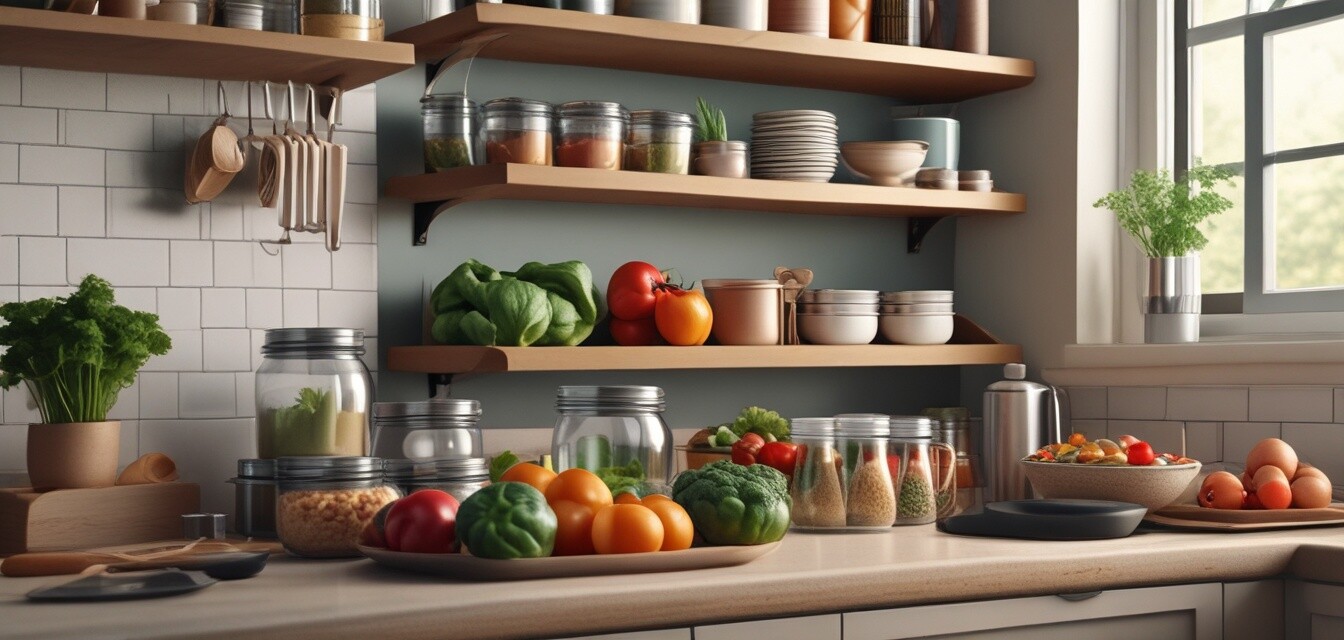
Meal Prep for beginners: A step-by-step guide
- Meal prepping saves time and reduces daily cooking stress.
- Organize your kitchen and ingredients for easy access.
- Use a variety of containers for different types of meals.
- Plan your meals for the week ahead to stay organized.
- Cooking in batches can save money on groceries.
Meal prepping is a fantastic way to make cooking easier and more organized throughout your week. For beginners, it can seem overwhelming, but with a step-by-step approach, anyone can start meal prepping and enjoy the benefits. In this guide, we will walk you through the essentials of meal prep, from planning your meals to the best practices for food storage. So, let's dive in!
What is meal prep?
Meal prep refers to the practice of preparing meals ahead of time, whether it be cooking entire dishes in advance, chopping vegetables, or portioning out snacks. By dedicating a small amount of time each week to meal prep, you can simplify your daily cooking routine and ensure that you have healthy meals readily available.
Benefits of meal prepping
- Saves time during busy weekdays.
- Promotes healthier eating habits.
- Reduces food waste.
- Helps you stick to a budget.
- Minimizes daily cooking stress.
Step-by-step guide to meal prepping
Step 1: Plan your meals
Before you begin meal prepping, it's essential to plan your meals for the week. Start by deciding how many meals you will need and consider the following:
- Choose a mix of protein, vegetables, and grains.
- Incorporate variety to keep meals interesting.
- Consider including healthy snacks.
- Use a calendar or meal planning app to organize your choices.
Step 2: Make a shopping list
Once you’ve decided on your meals, write down all the ingredients required. This will help you avoid impulse buys and ensure you have everything needed for your meal prep session.
Step 3: Organize your kitchen
Having an organized kitchen can make meal prep much smoother. Here are a few tips:
- Clear out any clutter from your countertops.
- Gather your favorite kitchen gadgets (see our kitchen gadgets & tools page).
- Get containers ready for storage (glass or BPA-free plastic).
Step 4: Cook in batches
Now that everything is planned and organized, it's time to get cooking! Choose some staple recipes that you can prepare in larger quantities. Here’s how:
- Cook proteins like chicken, beef, or tofu in bulk.
- Prepare grains like rice or quinoa to accompany your meals.
- Make large batches of roasted or steamed vegetables.
Step 5: Portion and store your meals
Once your meals are cooked, portion them into individual containers for easy access. Here are some tips for storage:
- Label containers with the meal type and date.
- Use clear containers to easily see what's inside.
- Store some meals in the freezer for later use.
Essential tools for meal prepping
Investing in certain tools can make the meal prepping process even easier. Consider the following:
| Tool | Purpose |
|---|---|
| Meal prep containers | For storing pre-portioned meals. |
| Cutting board | For chopping ingredients safely. |
| Sharp knives | For efficient food preparation. |
| Measuring cups | For accurate portion sizes. |
| Storage bags | For storing healthy snacks or leftovers. |
Tips for beginners
Beginner section
- Start small; choose a couple of meals to prep each week.
- Use seasonal ingredients to find the best flavors.
- Experiment with new recipes to keep things exciting.
- Don’t be afraid to mix and match ingredients.
Pros
- Efficient use of time and resources.
- Control over nutritional content.
- Better meal variety and flavors.
Cons
- Initial time investment can be significant.
- Requires storage space for meal prep containers.
- May lead to repetitive meals if not varied.
Conclusion
Meal prepping can transform your cooking routine, making it easier to prepare healthy meals throughout the week. By following this step-by-step guide, you can get started on your meal prep journey, saving time, reducing stress, and boosting your culinary skills in the process. For more tips and resources, check out our Tips and How-To's section.